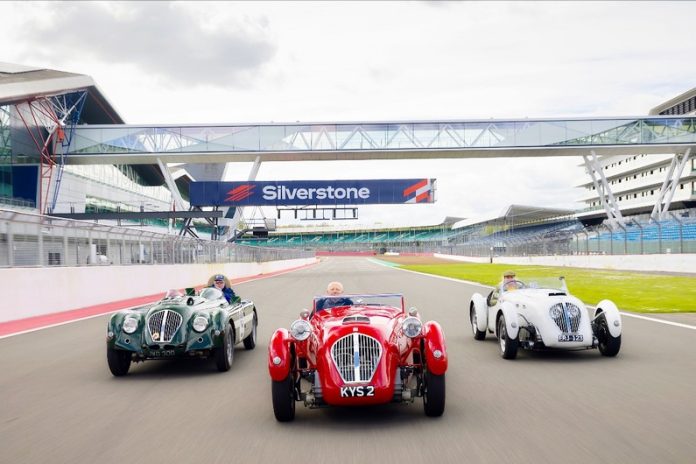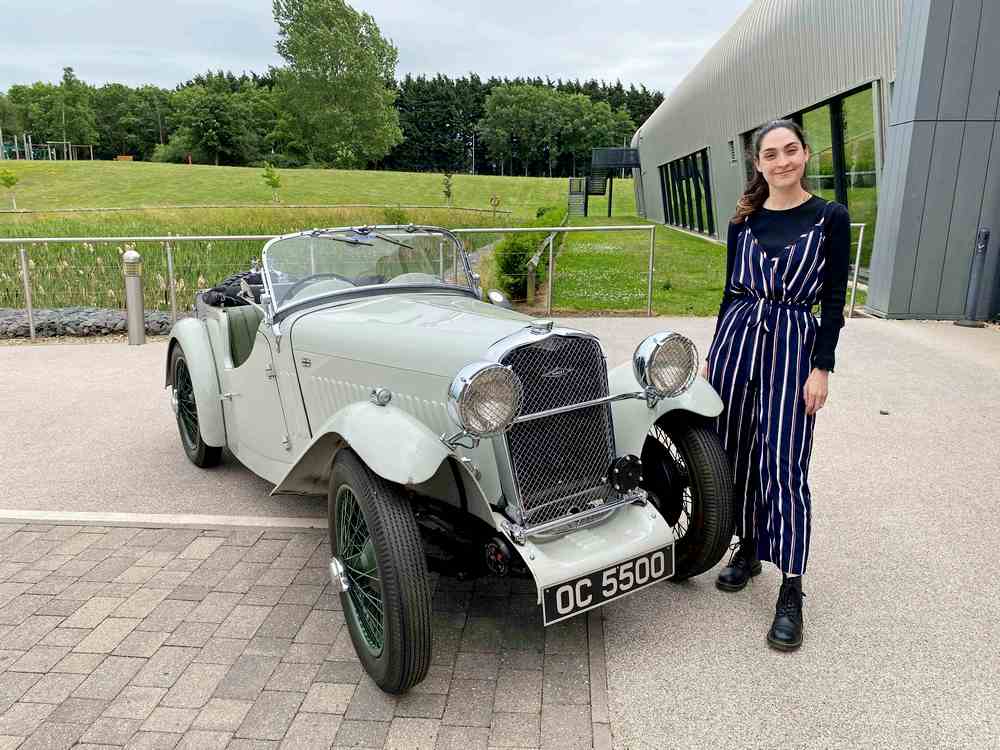Recently a friend forwarded to me an article on the cars that tried to beat the famous “Le Train Blue/The Blue Train” or to give it its official name – ‘Le Calais-Méditerranée Express’.
This was a train run by a private rail company – Le Chemins de Fer de Paris à Lyon et à la Méditerranée, generally referred to as PLM. The service was launched in the early 1920s and withdrawn just before WWII, for obvious reasons. One of the main purposes of the train was to transport wealthy British passengers, who didn’t want to tolerate the vagaries a normal British winter, to the more temperate climes of the French Mediterranean coast. In order to make the journey as comfortable as possible for those well heeled clients, the train’s carriages included a number of luxury sleeper cars. These were painted dark blue, thus giving rise to the popular name “Le Train Blue/The Blue Train”.
It commenced its southward journey from La Gare de Calais – Maritime at 1.00pm having collected its British passengers from the cross channel ferries. It then travelled to La Gare du Nord, Paris, then across the French capital to La Gare de Lyon where it collected additional passengers and carriages. It left Paris in the early evening making stops at Dijon, Chalon and Lyon before arriving at Marseille in the early morning. Now it started dropping off its British passengers at the famous Cote d’Azur resorts such as, St. Raphael, Juan-les-Pins, Antibes, Cannes, Nice, Monaco and finally Menton near the border between France and Italy.
Via the press, this train journey captured the imagination of the British public, even of the vast majority who were not in a position to avail themselves of its services. Agatha Christie featured it in one of her Hercule Poirot novels “The Mystery of the Blue Train, published in 1928.
Rover Light Six
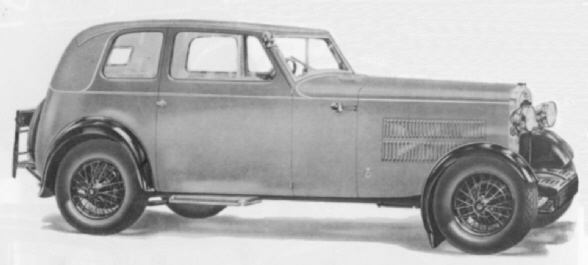
The Brits, always up for a challenge, came up with the idea of trying to race ‘The Blue Train’ in an attempt to arrive before it either at Calais or one of the Mediterranean resorts, depending upon the direction of travel. This was a daunting task, roads and their surfaces were not as developed as they are today. Fuel stations, as we know them now, hardly existed, so, special arrangements had to be made for refuelling: tyre technology was in its infancy, not up to the travails of running on poor surfaces, at relatively high speeds, without succumbing. This, over a distance of around 750 miles (1207 Kms). Initially it was ‘gentleman amateurs’ who pitted themselves and their cars against the train. However, it was a commercially inspired team that was the first to succeed in beating it. The Rover Company, led by their PR man, Dudley Noble, was the first manufacturer to exploit a race against The Blue Train as a publicity opportunity.
So, what was involved in trying to beat ‘The Blue Train’? Noble was aware that there had been several unsuccessful attempts to beat it, his team and car had to be better prepared. In January 1930 he took the recently launched latest version of the Rover Light Six press demonstrator across the Channel to Calais. He had recruited, as working passengers, Harold Pemberton, the Daily Express newspaper motoring correspondent and Frank Bennett, a member of Rover’s car development staff. The latter to attend to any mechanical adjustments, maintenance or repairs that may have been necessary. Noble had obviously invited Pemberton along to ensure a front page story in the popular Daily Express newspaper. Even in those days paying for a front page advertisement would cost around £750.
The improved Rover, which this run was to promote, was a fairly inexpensive car compared to other cars that had and would, in future, race ‘the train’. The two-door saloon with cycle type front mudguards cost £325, or £332 with the optional four-speed gearbox. Noble had done his “homework”, although advertising for the train majored on its luxury and 60 mph average running speed, in fact, the actual average, taking scheduled stops into account, hardly made 40mph over the 750 mile journey from Calais to St. Raphael on Le Cote D’Azur. As stated, this was because it took time to travel from Paris Gare du Nord to Paris Gare de Lyon. Then it stopped at Dijon to change locomotives and repeated this again at Marseilles.
Having crossed the Channel the Rover Light-Six was parked at the level crossing at Le Gare de Calais – Maritime, engine running, ready to drive off the moment the ‘Blue Train’ started to pull away from the platform. The sporting Gods were not with our plucky team on this occasion, after 5½ hours driving, which had placed the Rover an hour ahead of the train, they hit a bank of fog so thick that they had to abandon the run. They then decided to do the run in the opposite direction, so drove down to St Raphael with the aim of leaving with the train from there on Sunday evening 26th January. This they did but again fate was not treating them kindly, after about 30 miles Bennett was at the wheel and misjudged a corner in pouring rain. The car went over the edge of the road and down a ravine. Harold Pemberton was temporarily knocked unconscious, but a passing truck towed the car back onto the RN7. It was found to be undamaged apart from some dents and a broken exhaust silencer. Undaunted, they continued on their journey, despite bad weather (what did they expect in January?) the Rover achieved its goal, arriving at Le Gare Calais – Maritime 20 minutes before the ‘Blue Train’ arrived. Totally amazing, what an incredible story of daring motoring.
This naturally provided the required publicity in the British newspapers but especially via Harold Pemberton’s “first-hand experience” story in the Daily Express. Apparently there was a degree of subterfuge used in the telling of some of the stories, masking the fact that the success had been achieved by a “professional” team.
The publicity caused others to contemplate racing the ‘Blue Train’. However, the RAC began to object, as it had to the pre-1914 attempts to see which combination of cars and drivers could get to Monte Carlo in the shortest time. The RAC who helped to establish the rules for motor car competitions in the U.K. did not look favourably on speed events using roads open to the public. Neither did the French authorities (see the Bentley story). Despite this non-approval, the activity of getting from A to B in the fastest time or beating another mode of transport, most logically railway trains, was not banned. I suppose it would be difficult to do so. The only control that could legally be put into effect was normal speed control measures which in those days would be conducted by police patrols. Researching this subject has raised some interesting issues regarding using cars on public roads to break records. I will leave you with this one thought – Road Rallies organised by local car clubs, in the 60s thru 90s (which I used to do myself), are not anywhere near as popular now, mainly because of the more stringent regulations that have to be adhered to.
Apologies for that digression – back to 1930 and ‘The Blue Train’. As I say, the publicity given to the Rover success caused others to think about improving on the time differential achieved by that car.
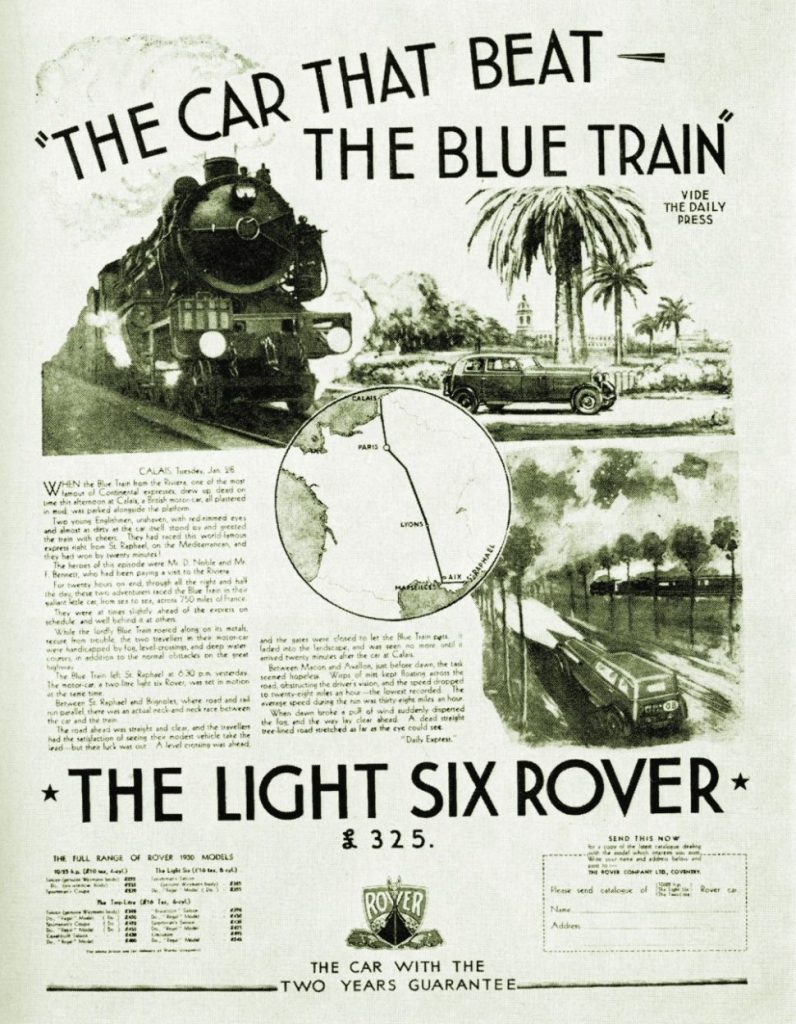
Alvis Silver Eagle
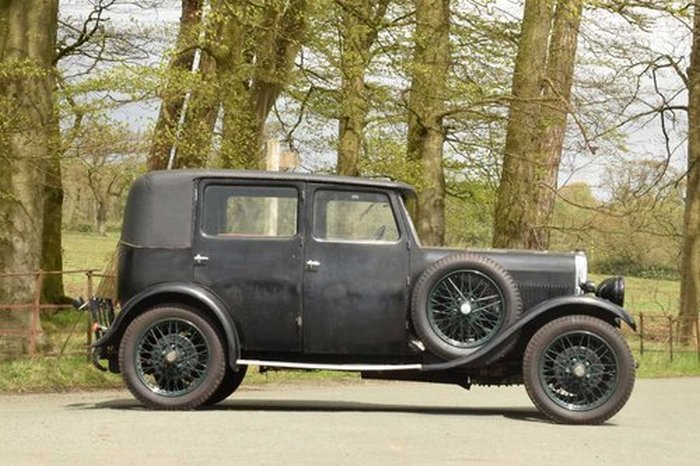
A private motorist, Mr. E.J.P. Eugster, at the end of a golfing holiday on the Cote d’Azur, decided that he would attempt to beat The Blue Train on his way home to England via Calais. He would do this in his recently acquired Alvis Silver Eagle with the ‘Sportsman’ saloon body constructed by the Coventry based coachbuilders, Cross and Ellis (Crosslis Coachwork). He and a friend set off in the evening of an early March 1930, day, at the same time as ‘The Blue Train’ was leaving Cannes railway station. They were lucky in as much as the night was dry and clear, they soon settled down to a steady 55-60 miles an hour along the fine straight road to Brignoles. Aixen-Provence was 76 miles away and was made on schedule, they arrived at Avignon ten minutes ahead of time. They estimated that they would arrive at Lyons at around 12.30am putting them one hour ahead of the train. Then they encounter rain and at the speeds they were doing the tail of the car started sliding causing the driver to raise his foot from the accelerator pedal. By 5.00 am they reached Avalons, more than half the journey completed. Dawn was emerging and visibility improved allowing them to travel a little faster, a steady 70 mph was seen on the speedo. Fontainebleau was reached by 7.00 am with only 300 miles left but bad roads were encountered on the outskirts of Paris causing them to make a detour. With the sun shining they were in high spirits. Petrol was acquired, not without difficulty which slowed them down somewhat and they were ready to race for the finishing destination, Le Gare de Calais – Maritime, via Gomes, Abberville, and Boulogne. They arrived at 12.15pm, three hours before the train!
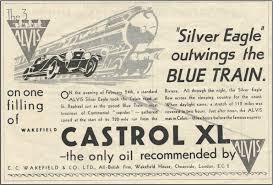
Bentley Speed Six Saloon
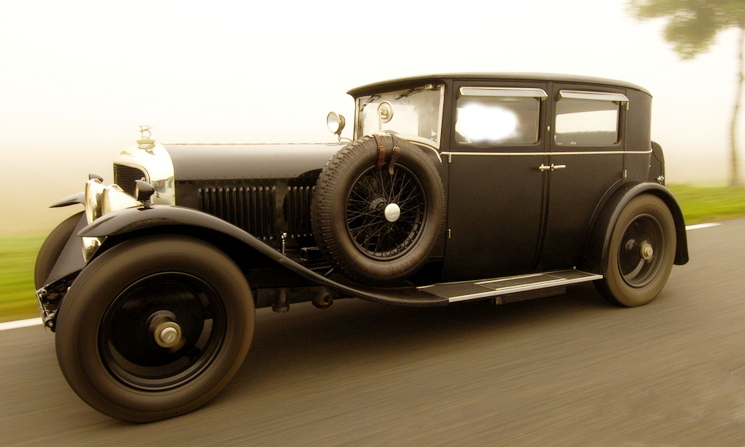
Here is the most famous story of all, regarding a car beating ‘The Blue Train’, it resulted in one of the most desirable cars of all time being designed and named after that success. In March 1930 the famous Bentley racing driver, Capt Woolf ‘Babe’ Barnato, heir to a vast fortune from the Kimberley diamond mines in South Africa and by this time chairman of Bentley Motors, was holidaying in Cannes on the French Riviera.
He was at a dinner party on board a yacht when the subject of racing the famous ‘Blue Train’ came up in conversation, as both a Rover and an Alvis had recently beaten the train from the French Riviera to Calais. Barnato was full of bravado, maybe fuelled by several glasses of ‘Grand Cru’ wine, he wasn’t impressed by the Rover and Alvis achievements believing that he could beat the train by a much bigger margin, driving his own Bentley Speed Six car. Some of the stories say that he accepted a bet from some of his companions in the hotel, that he could arrive at his club in London before the ‘Blue Train’ arrived in Calais. What a claim! But further research by me suggests that there was no bet at all, that this element, like many others, has been added just to spice the story. it matters not!
Barnato had arrived in Cannes in his Bentley, a Mulliner bodied, Speed Six four-door saloon and it was this car that he was to use for the race against ‘The Blue Train’. Incidentally, the Mulliner body was built using the Weymann method of body construction developed by Charles Weymann of Carrossier Weymann, 20 Rue Troyon, Paris, France. The next day at 5:45pm, as the Blue Train left the Cannes railway station, Barnato and his companion, amateur golfer Dale Bourne, left the Carlton Bar and set off for Calais in their comfortable and speedy Bentley.
It was still Winter and as in the Rover’s attempt, the weather was not kind. Heavy rain hampered their journey between Cannes and Lyon. To make matters worse at around 4.00 am, near Auxerre, they lost time trying to locate their pre-arranged refuelling point. Worse followed, dense fog and a puncture which necessitated the use of their only spare tyre. Even the normally ebullient Woolf Banarto must have begun to wonder if the challenge he had publicly announced had been too rashly made. Despite all this they arrived at Calais at 10.30 am. Again, there is some dispute as to whether the original challenge was to get to Calais well in front of the train and beating the Alvis Silver Eagle’s time (which he did by two hours fifteen minutes); and then having achieved that set himself another challenge, that of arriving at his London Club before the train arrived at Le Gare Callais – Maritime. Or, was that the challenge all along? my instincts tell me that it was. They caught a cross channel steamer (commissioned especially for the venture?), arrived in Dover and drove at high speed through Kent. Woolf Barnato parked his Bentley Speed Six saloon outside the Conservative Club in St. James’ Street at 3.20pm. Just four minutes later the Blue Train arrived at Le Gare de Calais – Maritime!
Barnato had won his unofficial dare, although the French Motor Manufacturer’s Association fined Bentley Motors around £160 for racing on public roads and barred Bentley from the Paris Salon of 1930. Barnato claimed that he had raced as a private individual and not as the Chairman of Bentley … a claim that failed to convince the authorities.
Two months later the bodybuilders, Gurney Nutting, launched a very attractive Coupe based upon a Bentley Speed Six chassis and running gear. Barnato immediately named it ‘The Blue Train’ in honour of the success he had achieved earlier in the year. The name stuck, to such an extent that whenever Barnato’s epic drive was mentioned, even by journalists who should have known better, it was the Coupe that was referred to as being the car in which Woolf Barnato and Dale Bourne had achieved that success. Even Terence Curneo got it wrong in his famous painting –
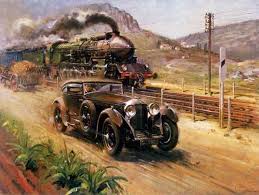
The more I researched this Bentley story, in particular, the more I became aware of the myths that have been woven around both the origins of the journey, the car itself and even the attribution of the discovery of the true story. It is true that time layers all good stories with much dust but sometimes the truth is very easy to discover, it is just knowing where to look or being graced with good fortune. The role that Bruce McCaw of Washington State, USA, should be acknowledged as the person who has most recently put the “which Bentley car was it?” to bed. He and his wife Jolene, own both the original Bentley Speed Six Saloon that beat ‘The Blue Train’ and the first Gurney Nutting ‘Blue Train’ Coupe Special.
There are many “cars against ‘The Blue Train'” stories on the internet, many of them very detailed and interesting but I haven’t come across one that didn’t contain some inaccuracy or other. I cannot claim that this story is one hundred per cent accurate because I have had to rely on the reports of others but I have tried to make sure that references to the cars and venues are correct. I acknowledge, in particular, articles, on the subject, that have appeared in the Motor Sport magazine over the years.
I have really enjoyed researching and writing this story – all from receiving an email from Australia. Thanks Bill.
The ‘Gurney Nutting’ (using the Weymann coachbuilding system) Bentley Speed Six Coupe ‘Blue Train’ Special

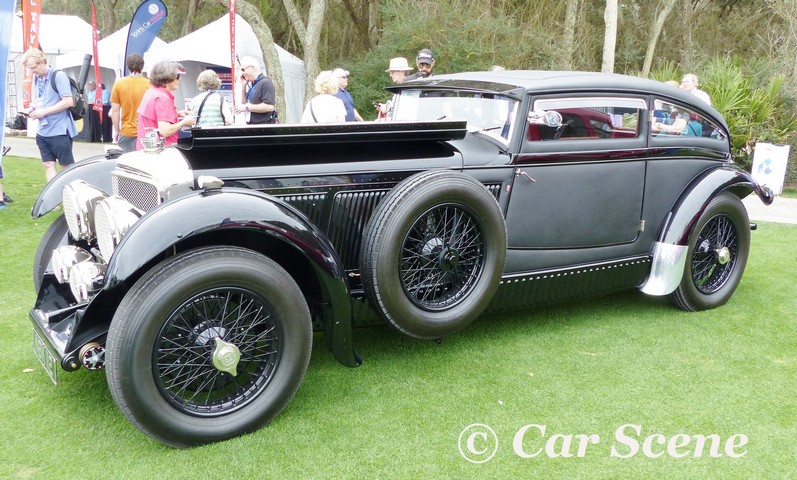
The H.J. Mulliner version of the Bentley Speed Six Sportsman
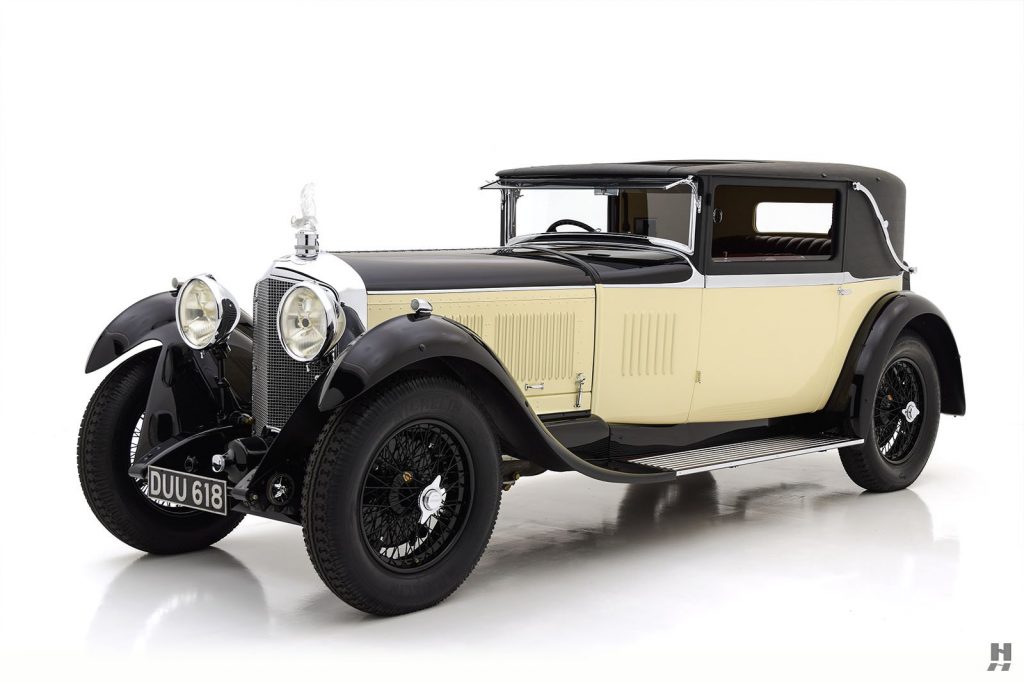
Nick
![]()
Credits –
These are the organisations that we use to bring our posts to you. All provide an excellent service –
Technical assistance and inspiration – https://www.four90designs.co.uk/
Photo editing – https://www.faststone.org/
File sharing & collaboration –https://www.hightail.com/
Platform provider –https://wordpress.com/
Website hosting –https://www.34sp.com/
File Conversions – https://www.zamzar.com/


